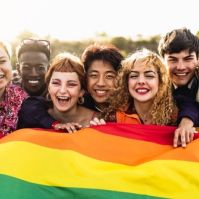 The Boy Scouts of America will now allow transgender boys to join its ranks. Serving about 2.4 million boys and young men just in the United States, the organization has been around since 1908. The early years were not easy. Segregation was a big problem for the BSA, because the founders believed that the Scouts should not segregate based on race. Local programs were encouraged to follow the same policies that were followed in the schools. In the South, it was not uncommon to have segregated troops, some open to only white boys while others were strictly colored. In the 1940s, the troops were desegregated, but it wasn't a smooth process.
The Boy Scouts of America will now allow transgender boys to join its ranks. Serving about 2.4 million boys and young men just in the United States, the organization has been around since 1908. The early years were not easy. Segregation was a big problem for the BSA, because the founders believed that the Scouts should not segregate based on race. Local programs were encouraged to follow the same policies that were followed in the schools. In the South, it was not uncommon to have segregated troops, some open to only white boys while others were strictly colored. In the 1940s, the troops were desegregated, but it wasn't a smooth process.
Another controversy in the early years of the Boy Scouts program was the conflict between pacifism and patriotism. Boy Scouts wore uniforms, which seemed militaristic, but the Boy Scouts were considered unpatriotic because the boys were kept from believing that the Boy Scouts were training grounds for the military and the idea of fighting for their country. The Boy Scouts found themselves in the middle grounds, unable to make either side happy.
Homosexuality Controversy in Scouting
The Boy Scouts have interpreted the Scout Oath as being incompatible with atheism or agnosticism. Although the Scouts do not adhere to any particular religious belief, the leadership does maintain that atheists and agnostics are not role models for the boys, and excludes those individuals for membership and leadership. However, the Boy Scouts do recognize more than 38 faith groups, including, Islam, Judiasm, Buddhism, Sikhism and Hinduism.
The Boy Scout Oath:
On my honor I will do my best To do my duty to God and my country and to obey the Scout Law; To help other people at all times; To keep myself physically strong, mentally awake, and morally straight.
Until 2013, the official position of the Boy Scouts national governing body was to deny membership and leadership to openly practicing homosexuals. In the years preceding the change in policy, members and leaders were not asked about their sexual orientation, but if it was discovered that the individual was living in a gay relationship, the person was asked to leave the organization.
In 2012, an 11-person committee recommended retaining the policy banning gay members and leaders, but two members of the National Executive Board opposed that policy. They encouraged dialogue within the board to change the ban, because they believed that the policy was unsustainable. It took time, but it was changed. On January 1, 2014, the Boy Scouts allowed membership to youth no matter what their sexual orientation was. The ban on gay leaders remained in place for another year and a half, but finally, the National Executive Board lifted the ban on openly gay leaders.
Transgender Boys in the Boy Scouts
Although the Boy Scouts have special interest groups open to girls and allow women to be in leadership positions, the scouting program itself is designed to meet the needs of boys. Because the group is a private organization, they can do this. Transgender boys were left out of the program, because the qualifier was the gender on a person's birth certificate. Just this year, the Boy Scouts accepted transgender boys into their boys-only programs.
Unfortunately, individually chartered troops within the Boy Scouts may still discriminate against gays and transgender boys. Per the Boy Scouts website, "Chartered organizations will continue to select their adult leaders and religious chartered organizations may continue to use religious beliefs as criteria for selecting adult leaders, including matters of sexuality," and, "Our organization's local councils will help find units that can provide for the best interest of the child."
There is still a lot of work to do, but this change seems promising for boys of all ages. It's good when private organizations see that there are people who are not being served and make changes to adapt.



